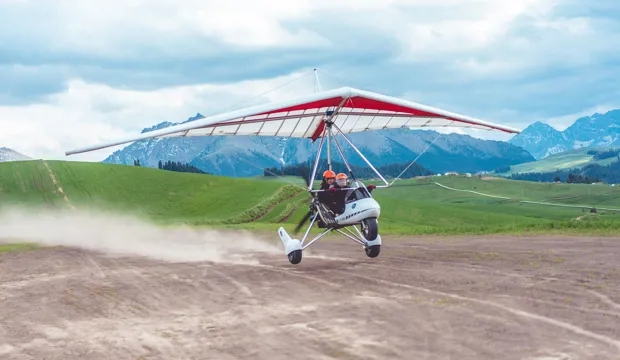
Design a sustainable aircraft
Understand sustainability issues in engineering and how these are applied when designing a product
Petrochemicals are likely to become scarcer in the future as the world’s oil resources are used up. Engineers and designers will need to consider alternative ways of powering aircraft. Can your students get creative and design a sustainably powered aircraft of the future?
This is one of a set of resources produced in conjunction with the engineering company Arconic. The resources are designed to support teaching of key engineering concepts at both KS3 and KS4, including the new GCSE in Engineering. This resource focuses on designing a sustainably powered aircraft for the future.
Activity: Design your own sustainable aircraft
In this activity, learners will design a sustainably powered aircraft of the future. They will learn about the alternatives to using petrochemicals to power aircrafts. It will build understanding of sustainability issues in engineering and how these are applied when designing a product. This activity will also encourage students to get creative as they design a sustainable, but aesthetically pleasing aircraft.
This could be used as a one-off main lesson activity, as part of a wider unit of work focusing on sources of energy and sustainability issues in engineering or as part of a scheme on aircraft design using the resources developed in association with Arconic.
It is intended that learners complete this activity as individuals.
Some prior understanding of sustainability issues and energy generation methods may be advantageous.
It should be noted that this activity refers to aircraft rather than airplanes. Depending upon the capabilities and creativity of the learners, the teacher could outline a wide range of flying machines for inspiration, such as helicopters, airplanes and gliders, airships and blimps, hot air balloons, hang gliders, rockets, maglev trains, levitating hoverboards etc.
Learners should use notes and detailed annotations to explain and describe how their design meets the needs of the brief and design criteria. They should especially focus on how the product would function and the underlying science that would enable this to happen.
Tools/resources required
- Projector/Whiteboard
- Basic drawing equipment
- CAD software (if producing final design using CAD)
The engineering context
Sustainable design and the use of finite and non-finite resources is required learning as part of both the new Design and Technology and Engineering 9-1 GCSE courses.
The knowledge gained can also be used when selecting sources of energy for future product and system designs.
Suggested learning outcomes
By the end of this activity students will know that oil is a non-renewable, finite resource, they will be able to understand and apply sustainable alternatives to petrochemicals for powering aircraft and they will be able to communicate design ideas using sketches, notes and annotations.
Download the free Design your own sustainable aircraft activity sheet below!
All activity sheets, worksheets and supporting resources are free to download, and all the documents are fully editable, so you can tailor them to your students’ and your schools’ needs.
The activity sheet includes teacher notes, guidance, useful web links, and links (where appropriate) to the national curriculum in each of the four devolved UK nations; England, Northern Ireland, Scotland and Wales.
Please share your classroom learning highlights with us @IETeducation.





